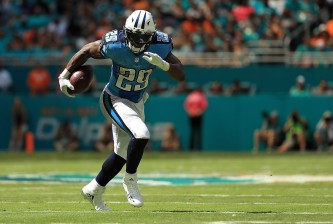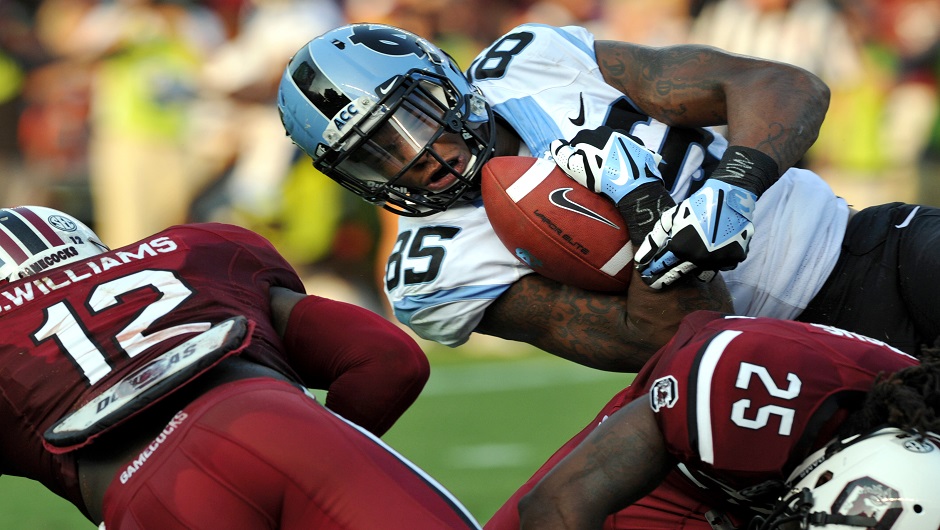Evaluating college prospects and how they translate to the NFL is an extraordinarily difficult process—one that even the brightest football minds struggle with. What can be helpful in projecting these players’ attributes and roles is comparing them to players that are already in the league, looking at numbers and tape from both players to see how much difference there is between the two.
This year’s draft class features a lot of athletic freaks who have a chance to be the next wave of NFL superstars in the years to come. How exactly do these players stack up to their NFL counterparts?
Eric Ebron: Vernon Davis
As far as freak-of-nature tight ends go, there is not much separating these two in terms of raw athletic ability. Both players have off-the-charts athleticism, body control and strength. Also like Davis, Eric Ebron is a somewhat-raw prospect whose best days are in front of him in the NFL.
Davis, however, does have the upper hand on Ebron in the speed department—although not by much. Ebron’s 4.50 40-yard dash is a hair slower than Davis’ 4.38, but speed will hardly be a problem for Ebron in the NFL.
Jadeveon Clowney: Julius Peppers
Without question, Jadeveon Clowney is the most gifted player in this year’s draft, and may be the most athletically-gifted prospect to enter the draft since the turn of the century. His 4.53 40-yard dash at 266 pounds is other-worldly for a player at his position.
Perhaps the only defensive end prospect to be close to the same realm as Clowney as a prospect is Julius Peppers, who has enjoyed a brilliant career with the Carolina Panthers and Chicago Bears. For comparison, the second-overall pick from the 2002 draft ran a 4.71.
Mike Evans: Alshon Jeffery
Mike Evans can thank Alshon Jeffery for his increased value in NFL circles. Looked down upon by some as a player who would not be able to succeed in the NFL because of his inability to separate, Jeffery responded to his critics with a 1,400-yard season in 2013.
As a result, teams in search for their own version of Jeffery will focus squarely on Mike Evans. Like Jeffery, Evans does not separate like a player like Wes Welker but wins with his immense size, great hands and physicality at the line of scrimmage. Evans is also a bit faster than Jeffery, making him an even more dangerous deep threat.
Teddy Bridgewater: Alex Smith
Bridgewater’s stock has taken a significant drop since the end of the 2012 season when he was touted as a likely No. 1 pick, but he still has a lot of quality attributes that will help him be a productive starter in the NFL.
Bridgewater does not have any traits that “wow” scouts in terms of his arm strength or mobility, but he is an accurate, rhythm passer with great intangibles. While the team that drafts him will certainly hope that he develops much more quickly, Bridgewater could be a younger version of Alex Smith.
Smith has developed into a smart, high-percentage passer who is capable of making the deep throw—just like Bridgewater. Neither player has arm strength that turns heads and possess average mobility, but they both have what it takes to win a lot of games in the league.
Sammy Watkins: Josh Gordon
What Watkins and Gordon have in common is their ability to master the entire route tree, which allows the dynamic WRs to make plays in so many different ways. Whether it is on a bubble screen, a deep-in or a jump-ball in the red zone, these two players bring so much versatility to a passing game.
After the obnoxious season Gordon just had, the team that drafts Watkins will be thrilled to have their own version of the star Browns receiver. With his rare combination of speed, agility, physicality, size and hands, the potential for Watkins to be an elite NFL receiver is there.
























